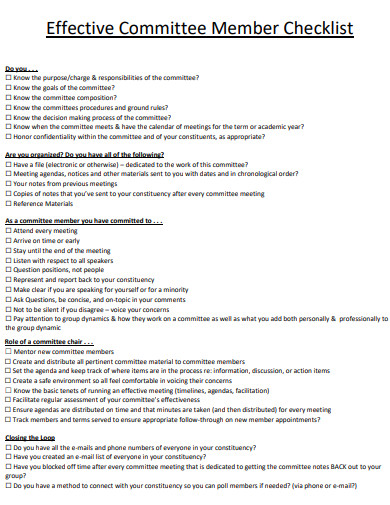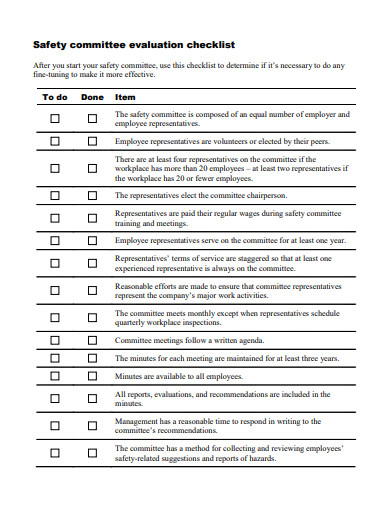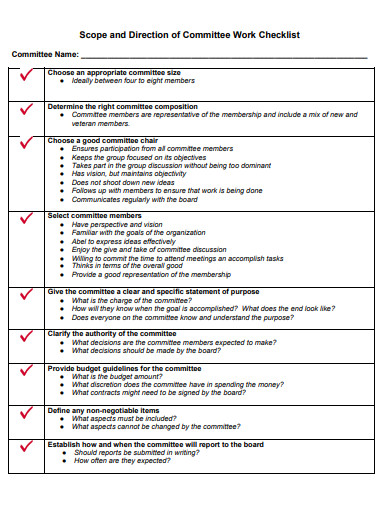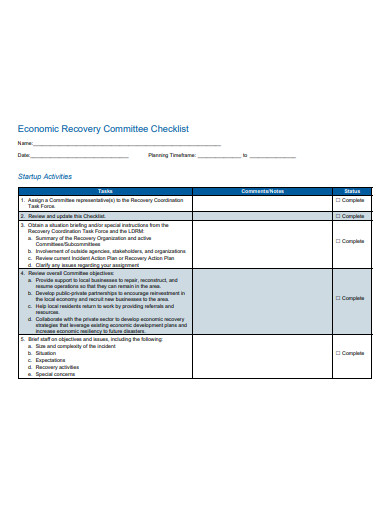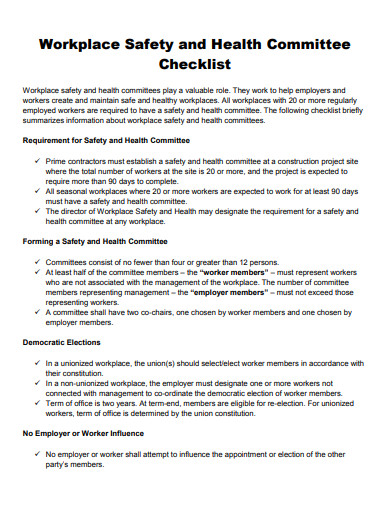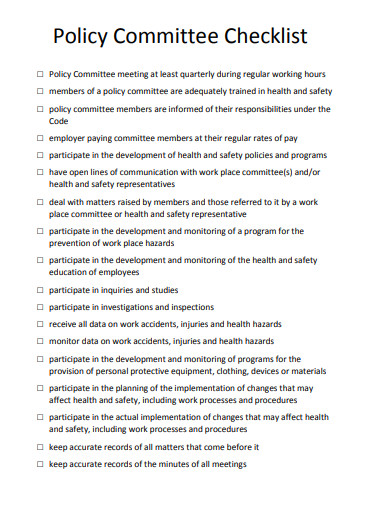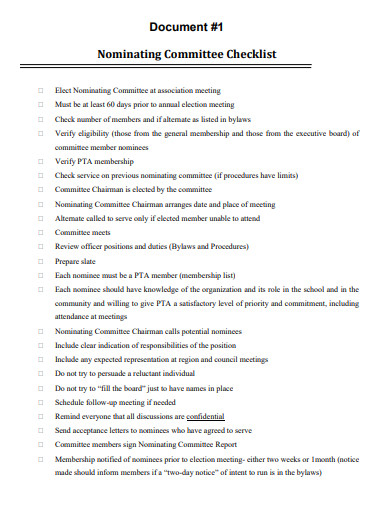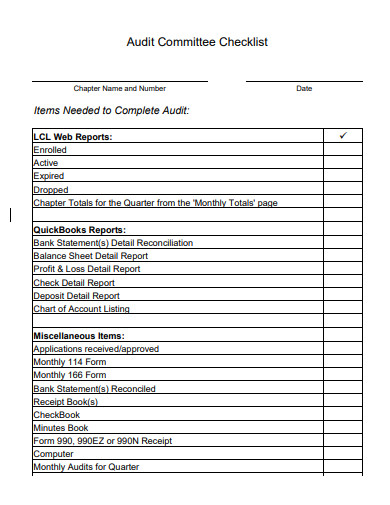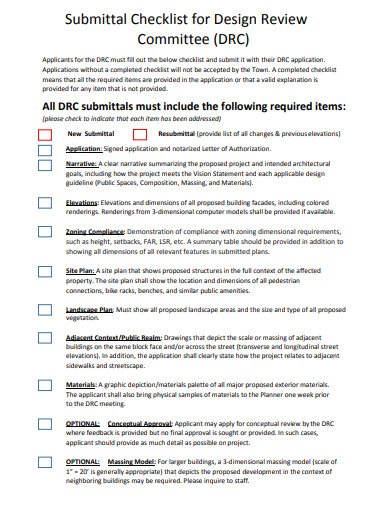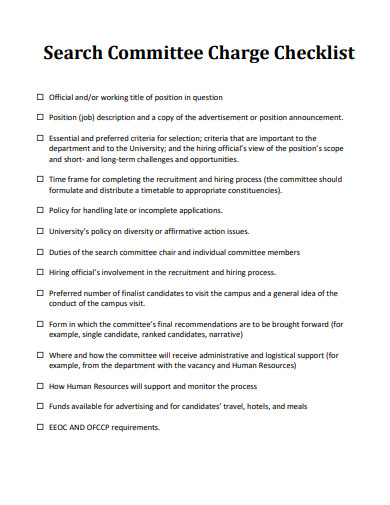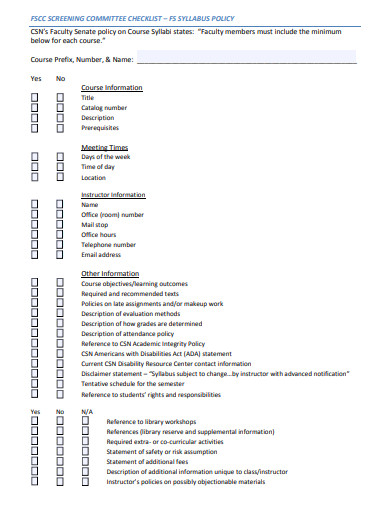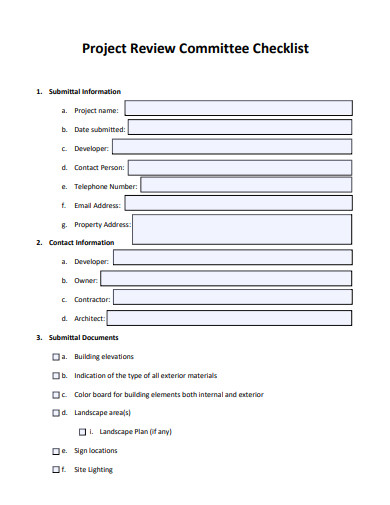Committee planning is an essential element of any successful sample event or project. A well-structured ‘Committee Checklist’ ensures that all tasks are assigned, responsibilities are clear, and goals are achieved efficiently. Whether you’re coordinating a corporate event, managing a charity fundraiser, or organizing a community initiative, leveraging a comprehensive sample checklist can be the difference between success and overlooked details. Dive into our guide to discover best practices, avoid common pitfalls, and streamline your committee operations with ease.
17+ Committee Checklist Samples
1. Sample Checklist Template

2. Basic Checklist Template
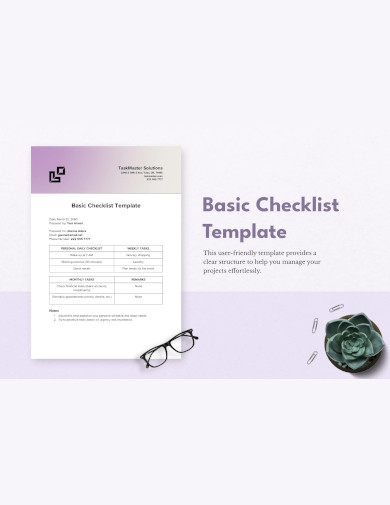
3. Formal Checklist Template
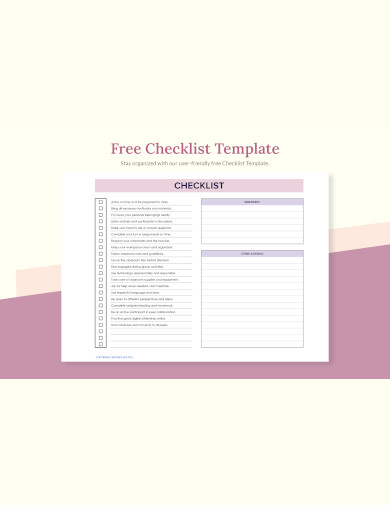
4. Printable Checklist Template
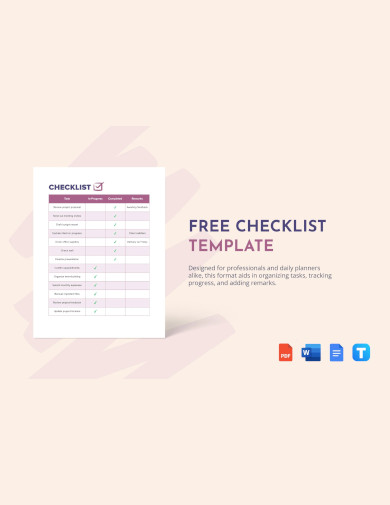
5. Effective Committee Member Checklist Template
What is a Committee Checklist?
A committee checklist is a structured and methodical tool used by committees, whether in business, non-profit organizations, or public entities, to ensure they effectively complete tasks, reach decisions, and achieve their goals. Such a printable checklist is essential for ensuring that all necessary steps are followed, important issues are addressed, and nothing is overlooked. This tool is especially crucial for committees that handle sensitive issues or are responsible for significant decision-making processes.
Purpose and Benefits
The primary purpose of a committee checklist is to guide committee members throughout their duties, ensuring consistency and completeness in their approach. Here are some of the core benefits:
- Efficiency and Productivity: With a checklist in hand, members can stay focused on the task, avoiding potential distractions or tangents that aren’t relevant.
- Accountability and Transparency: A checklist provides a clear record of what needs to be done and what has been completed. This transparency ensures that all members understand their roles and responsibilities.
- Reduction in Errors: By following a structured path, the chances of overlooking essential points or steps are minimized.
- Improved Communication: A shared checklist helps in setting clear expectations and allows for better communication among committee members.
Key Elements of an Effective Committee Checklist
1. Pre-Meeting Preparations
- Set clear sample objectives for the meeting.
- Send out invitations in advance, ensuring all key members can attend.
- Prepare and disseminate the sample agenda ahead of time.
- Arrange necessary materials or presentations.
- Confirm the meeting venue and any required technology or tools.
2. Roles and Responsibilities
- Chairperson: Guides the meeting, ensures adherence to the agenda, and manages time.
- Secretary: Takes minutes, records decisions, and manages documentation.
- Members: Contribute to discussions, provide sample feedback, and vote on decisions.
3. Agenda Adherence
- Start with a recap of the previous meeting and actions taken.
- Address each item in order, allowing adequate time for discussion.
- Encourage participation from all members.
- End with a summary and layout action points for the next meeting.
4. Documentation
- Ensure that minutes from the previous meeting are reviewed and approved.
- Record key points of discussion, decisions made, and actions assigned.
- Maintain a repository of all committee documentation for future reference.
5. Follow-Up Actions
- Clearly define post-meeting tasks and assign them to specific members.
- Set deadlines for each task.
- Establish a mechanism for members to sample report progress or challenges.
6. Feedback Mechanism
- Allow members to share their thoughts on the meeting’s effectiveness.
- Encourage suggestions for improving future meetings.
- Regularly review and update the checklist based on feedback received.
Incorporating the Checklist
For a committee checklist to be effective, it should not just be created but also actively used and updated as necessary. It can be introduced at the beginning of committee meetings and referred to throughout the meeting to ensure the group remains on track.
Moreover, it’s essential to review and revise the checklist periodically, taking into account the evolving needs of the committee and any feedback from the members.
Tips for Effective Use
- Flexibility: While it’s vital to have structure, there should be room for adjustments based on the committee’s specific needs.
- Regular Updates: As the committee evolves, so should the checklist. Regularly review and update it.
- Digital Tools: Consider using digital platforms or apps that can facilitate the creation, sharing, and updating of the committee checklist.
Implementing and Refining the Checklist
- Committee Training: Ensure that all members understand and are trained on the checklist’s use.
- Feedback Loop: After each meeting, gather feedback on the checklist’s effectiveness and make necessary refinements.
- Periodic Reviews: At regular intervals, review and update the checklist to keep it relevant and effective.
6. Safety Committee Evaluation Checklist Template
7. Committee Work Checklist Template
8. Economic Recovery Committee Checklist Template
9. Workplace Safety and Health Committee Checklist Template
10. Faculty Search Committee Checklist Template
11. Policy Committee Checklist Template
12. Nominating Committee Checklist Template
13. Audit Committee Checklist Template
14. Committee Submittal Checklist Template
15. Search Committee Charge Checklist Template
16. Screening Committee Checklist Template
17. Planning a Committee Event Checklist Template
18. Project Review Committee Checklist Template
Why Use a Committee Checklist?
- Efficiency: It promotes structured meetings, ensuring every minute counts.
- Consistency: Ensures that all meetings follow a set pattern, reducing confusion.
- Clarity: Provides clear direction on roles, responsibilities, and expected outcomes.
- Documentation: Acts as a record of what was discussed and decided.
How do you Create a Committee Checklist?
Committees play an essential role in many organizations, serving as the backbone for crucial decision-making processes, project execution, and strategic direction. Ensuring your committee runs efficiently is vital, and a well-crafted checklist can be an invaluable tool. You can also see more templates likes Evaluation Checklists. Here’s how to design a comprehensive committee checklist in a few easy steps.
1. Define the Committee’s Purpose
Before anything else, pinpoint the exact purpose of the committee. Is it for event planning, policy formulation, or perhaps project oversight? Clearly defining the purpose will act as the compass for your checklist. For instance, an event-planning committee would need tasks related to vendor selection, budgeting, and marketing, while a sample policy committee would delve into research, stakeholder interviews, and policy drafting.
2. Identify Key Roles and Responsibilities
Every committee is composed of members, each with a specific role. Chart out these roles and their respective responsibilities. Common roles include:
- Chairperson: Oversees meetings, sets the agenda, and ensures tasks are completed.
- Secretary: Takes minutes, maintains records, and communicates decisions.
- Treasurer: Manages funds and simple budgets.
- Members: Contribute to discussions, perform tasks, and participate in decision-making.
For each role, list down specific tasks they need to accomplish, ensuring there’s no overlap or ambiguity.
3. Schedule and Timeline
Determine the frequency of committee meetings – weekly, monthly, or as needed. For each meeting:
- List preparatory tasks: e.g., sending out agendas, ensuring tech setup for virtual meetings.
- Set a deadline for post-meeting tasks: e.g., circulating minutes, following up on action items.
Also, if the committee is working towards a larger goal, like organizing an event or implementing a new policy, set milestones along the way to track progress.
4. Communication Protocols
Clear communication is the lifeblood of any committee. Your checklist should include:
- How will decisions be communicated to stakeholders or the broader organization?
- Who is responsible for external communications?
- Which channels will be used for internal communication among committee members?
Regularly update and maintain a directory of contact information for all committee members to ensure seamless communication.
5. Review and Feedback Mechanisms
Committees should be adaptable, learning from past experiences. Incorporate periodic review sessions in your checklist. Ask questions like:
- Are we on track to achieve our goals?
- Which processes are working, and which need tweaking?
- Are there any external changes affecting the committee’s work?
Feedback isn’t just internal. Depending on the committee’s purpose, external feedback might be invaluable. Make provisions for this in your checklist, like conducting stakeholder interviews or sending out sample surveys.
In conclusion, a committee checklist is an indispensable tool that offers structure and clarity to committee processes. By ensuring that all pertinent issues are addressed and necessary actions are taken, it contributes to the smooth and effective functioning of any committee, fostering collaboration and driving better decision-making. You can also see more templates like Meeting Checklists.
Related Posts
FREE 17+ Survey Checklist Samples in MS Word | Google Docs | PDF
FREE 18+ Internship Checklist Samples in MS Word | Google Docs | PDF
FREE 18+ Statement Checklist Samples in MS Word | Google Sheets | PDF
FREE 20+ Voluntary Checklist Samples in MS Word | Google Sheets | PDF
FREE 18+ Summary Checklist Samples in MS Word | Google Sheets | PDF
FREE 14+ Sponsorship Checklist Samples in MS Word | MS Excel | PDF
FREE 18+ Conference Checklist Samples in MS Word | Google Sheets | PDF
FREE 17+ Lesson Checklist Samples in MS Word | Google Sheets | PDF
FREE 18+ Progress Checklist Samples in MS Word | Google Docs | PDF
FREE 18+ Enrollment Checklist Samples in MS Word | Google Docs | PDF
FREE 18+ Graduation Checklist Samples in MS Word | Google Sheets | PDF
FREE 15+ Consent Checklist Samples in MS Word | Google Sheets | PDF
FREE 18+ Review Checklist Samples in MS Word | Apple Pages | PDF
FREE 18+ Submission Checklist Samples in MS Word | Google Docs | PDF
FREE 18+ Request Checklist Samples in MS Word | MS Excel | PDF

